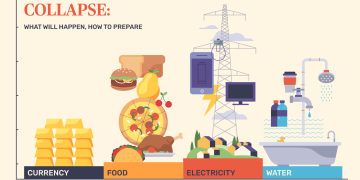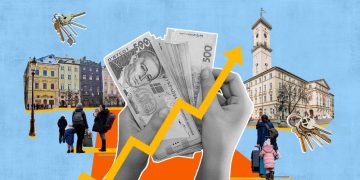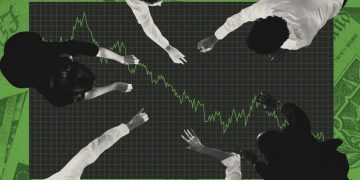Introduction
- Overview of China’s Economic Influence: A detailed introduction to China’s role as the second-largest economy in the world and its significance within the Asia-Pacific region.
- Economic Slowdown in China: Explanation of the causes of China’s economic slowdown, including demographic trends, high levels of debt, structural shifts, global trade tensions, and the impact of the COVID-19 pandemic.
- Purpose of the Article: This article will explore how a slowing Chinese economy will impact the Asia-Pacific region, with an emphasis on trade, investment, regional stability, and geopolitical relations.
Section 1: The State of China’s Economy
- Current Economic Indicators: A review of China’s key economic indicators, such as GDP growth, unemployment rates, inflation, and industrial output.
- Structural Challenges: Discussion on China’s demographic trends, including an aging population, and its implications for long-term growth.
- Debt and Real Estate Crisis: Analysis of China’s high levels of corporate and local government debt, with a focus on the Evergrande crisis and its consequences.
- Global Trade and Supply Chain Issues: The impact of the trade war with the U.S., tariffs, and the global supply chain disruptions, especially after the pandemic.
- Economic Rebalancing: China’s pivot from an export-driven economy to one more reliant on domestic consumption and services, and the difficulties involved in this transition.
Section 2: Economic Impacts on the Asia-Pacific Region
- Trade and Export Dependency: How countries in the Asia-Pacific region (such as Japan, South Korea, Australia, and ASEAN nations) are heavily dependent on trade with China.
- Reduction in Demand: The impact of reduced Chinese demand for goods and services, particularly in sectors like raw materials (e.g., iron ore, coal) and high-tech manufacturing.
- Supply Chain Disruptions: The role of China as a manufacturing hub and the consequences of its slowdown for regional supply chains.
- Declining Trade Volumes: Potential declines in the value of exports from neighboring economies to China, resulting in economic slowdowns across the region.
- Investment Slowdown: China’s reduced foreign direct investment (FDI) into the region and the broader impacts on infrastructure, development projects, and emerging markets.
- FDI Decline in ASEAN: How the slowdown might affect China’s investments in Southeast Asia, particularly in large-scale infrastructure projects like Belt and Road Initiative (BRI) ventures.
- Impact on Developed Economies: How slower growth in China could reduce Chinese investment into developed countries such as Japan, Australia, and South Korea.
Section 3: The Impact on Regional Economic Powerhouses
- Japan’s Economic Outlook: Japan’s economic dependence on China in terms of exports, manufacturing supply chains, and investment. The potential for Japan to diversify its supply chains and find new growth markets.
- Resilience of Japan’s Economy: How Japan’s advanced technology sector and domestic consumption might shield it from some of the adverse effects of China’s slowdown.
- The Trade War Effects: Potential opportunities and risks for Japan as a competitor in certain markets, given the slowdown in Chinese production.
- South Korea’s Economic Vulnerability: A discussion of South Korea’s strong trade relations with China, particularly in electronics, automotive, and semiconductors.
- Diversifying Supply Chains: How South Korea may try to reduce its dependence on China and the impact of this shift on its economic model.
- The Role of Technology: South Korea’s growing tech industry and how it could position itself to take advantage of a more fragmented global supply chain.
- Australia’s Dependence on Chinese Trade: Analyzing Australia’s economic reliance on Chinese demand for commodities, particularly iron ore and coal.
- Diversifying Export Markets: Australia’s efforts to explore new markets, such as India and Southeast Asia, to reduce its reliance on China.
- Political Tensions: The impact of strained political relations between China and Australia and how these tensions might exacerbate economic risks.
Section 4: Effects on ASEAN Economies
- ASEAN Trade Relations with China: An overview of ASEAN’s trade dependence on China and how the slowdown will affect growth, especially for smaller economies within the region.
- Commodity and Resource Exporters: How countries like Indonesia, Malaysia, and Vietnam that export raw materials to China may be impacted by a decline in Chinese demand.
- Manufacturing and Labor Intensive Industries: ASEAN countries that rely on Chinese factories or export manufacturing for key products such as textiles, electronics, and automobiles.
- Belt and Road Initiative (BRI): How China’s slowdown could affect BRI infrastructure projects in Southeast Asia and the financing and completion of these projects.
- Reduced Investment Flow: The risks associated with the reduction in Chinese-funded projects, as countries may face delays or financial shortfalls.
- Diversification of Trade Partners: ASEAN’s opportunities for diversifying trade relationships within the region (e.g., India, Japan, Australia) and how it may shift focus to regional partnerships under RCEP.

Section 5: Geopolitical and Security Implications
- Shifts in Regional Power Dynamics: How China’s economic slowdown could alter its geopolitical influence in the Asia-Pacific region, with implications for security and foreign policy.
- U.S.-China Rivalry: How slower economic growth in China may affect the broader U.S.-China rivalry in the region, especially in areas like technology, trade, and military presence.
- Growing Influence of India: As China’s economy slows, India’s economic rise may present a shift in regional power dynamics, creating opportunities for India to take a larger leadership role in the region.
- ASEAN’s Strategic Position: ASEAN countries may be forced to recalibrate their strategies in light of China’s reduced economic weight and look toward greater economic cooperation with the U.S. and Japan.
- Economic Diplomacy and Regional Cooperation: How countries in the Asia-Pacific region may seek new economic partnerships or alignments in response to China’s economic challenges.
- Strengthening Regional Trade Agreements: The role of multilateral trade agreements like the Comprehensive and Progressive Agreement for Trans-Pacific Partnership (CPTPP) and Regional Comprehensive Economic Partnership (RCEP) in reshaping economic relations.
Section 6: The Social and Humanitarian Effects
- Unemployment and Social Tensions: How a slowdown in the Chinese economy may lead to unemployment and social unrest, with ripple effects in neighboring economies reliant on Chinese demand for goods and services.
- Migration and Labor Markets: Impact on labor migration trends, especially in countries like Vietnam, the Philippines, and Thailand, where migrant workers may face job losses as Chinese demand weakens.
- Political Unrest: The potential for social unrest in both China and other Asia-Pacific nations due to economic slowdowns, rising inequality, and unemployment.
- Domestic Instability in China: How internal economic pressures could lead to political and social instability within China itself, which may also affect its foreign policy and relations with its neighbors.
Section 7: Long-Term Prospects and Adaptation Strategies
- Diversification and Resilience: How Asia-Pacific countries will adapt to China’s slowdown by diversifying their economies, investing in new industries, and improving technological capabilities.
- Technological Innovation: The potential for Asia-Pacific countries to leverage advancements in technology and innovation to reduce dependence on China and position themselves as global leaders in industries like AI, green energy, and biotechnology.
- Regional Economic Cooperation: Strengthening regional cooperation through economic integration initiatives like RCEP, which could offset the negative impacts of a Chinese slowdown.
- The Future of the Asia-Pacific Economy: Predictions for the Asia-Pacific region, considering both the risks and opportunities that may arise from China’s economic slowdown.
Section 8: Conclusion
- Summary of Key Insights: Recap of the key points discussed in the article, emphasizing the complexity and far-reaching effects of China’s economic slowdown on the Asia-Pacific region.
- Looking Forward: Speculative analysis of how the Asia-Pacific region will evolve in the next decade, with a focus on potential challenges and emerging opportunities in a post-China-dominant economic environment.
- Final Thoughts: The importance of strategic planning, resilience, and regional collaboration in navigating the uncertain future of the Asia-Pacific economy amidst China’s slowdown.





























